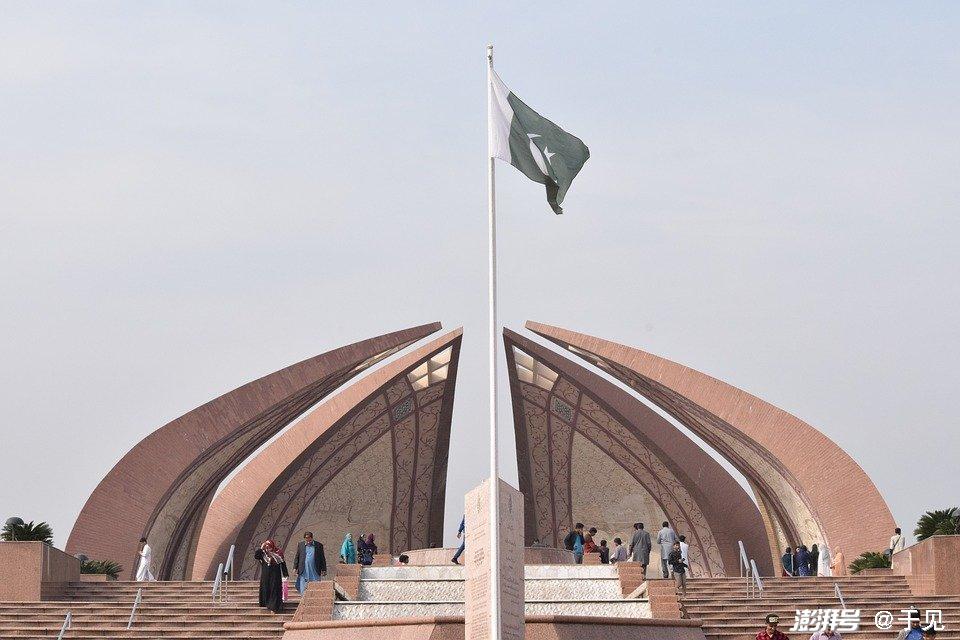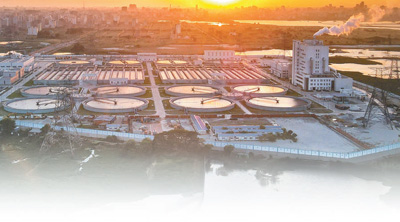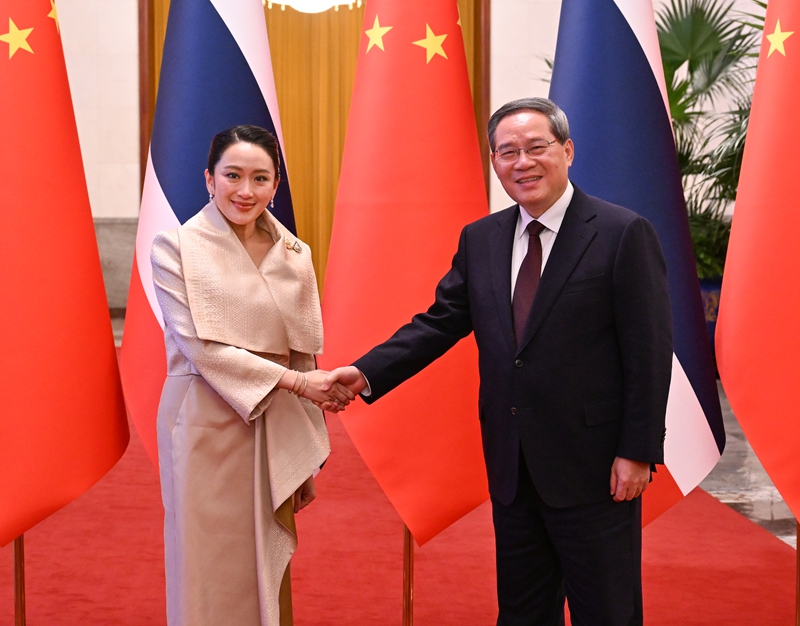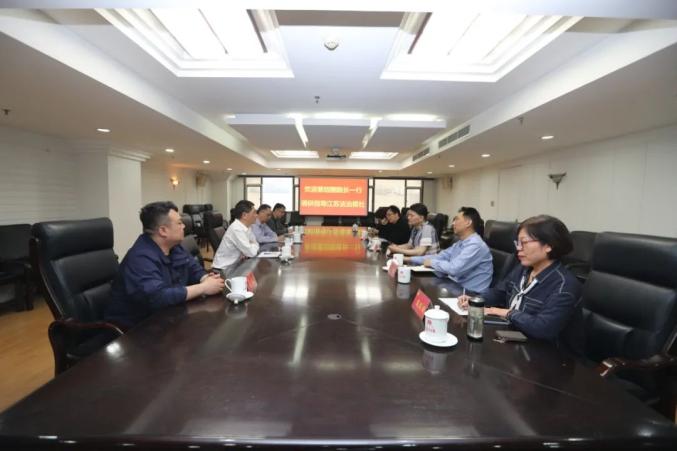China-Pakistan Economic Corridor 2.0: The Corridor Of Sharing Prosperity
China-Pakistan Economic Corridor 2.0: The Corridor Of Sharing Prosperity
The first decade of the China-Pakistan Economic Corridor has changed the face of Pakistan. The next decade will change the fate of Pakistan.
Ahsan Iqbal, Minister of Planning, Development and Special Projects, Pakistan
In 2013, the China-Pakistan Economic Corridor was officially launched as the flagship project of the Belt and Road Initiative, and it was just a bold vision at that time. At that time, Pakistan was facing severe energy shortages, inadequate infrastructure and stagnant economic growth. Almost no one can imagine that the China-Pakistan Economic Corridor will bring such profound changes to Pakistan's economic structure in just 10 years. However, this vision has become a reality today, reshaping Pakistan’s connectivity, energy security and development prospects, while also deepening our strategic partnership with China.
The first phase of the China-Pakistan Economic Corridor project has achieved once unimaginable results. In the energy field, 17 major projects have been completed, with a total installed capacity of 8,904 megawatts, supported by two coal mines and Pakistan's first ±660 kV UHV DC transmission line, with a total investment of nearly US$18 billion. These projects helped end the severe power shortage that caused power outages in households and industrial stagnation. The long-neglected Thar coal mine has now begun to provide electricity to factories and households, providing much-needed energy security for Pakistan. For many people, the China-Pakistan Economic Corridor means light and work, rekindling their new hope for the future.
In addition to energy, the transportation infrastructure of the China-Pakistan Economic Corridor has also closely linked Pakistan like never before. Eight major projects with a total investment of US$6.7 billion have brought 888 kilometers of modern highways and expressways to Pakistan, with an additional 853 kilometers under construction. Among them, the Havilian-Takot section of the Karakoram Highway is a flagship and is well-known worldwide for its outstanding quality and strategic significance. These highways are not only asphalt roads, but also commercial arteries, shortening travel time, expanding new markets, and incorporating the former remote areas into the embrace of national development. In addition to the highway, the 820-kilometer fiber optic cable from the Hongqilafu Pass to Rawalpindi has enabled Pakistan to achieve digital onshore connections with China for the first time, while the Orange Line Metro train has brought modern and efficient public transportation to Lahore. The China-Pakistan Economic Corridor is gradually changing the travel, trade and contact methods of Pakistani people.
This transformation is most evident in Gwadar Port. Once a quiet fishing village, it is now steadily developing into a maritime gateway to Pakistan. With China's support, the port and its surrounding infrastructure are reshaping the socio-economic landscape of Balochistan. Advanced hospitals, vocational training institutions, seawater desalination plants, home solar systems and the newly built Guadal International Airport are not only facilities, but also promote inclusion, not only improving the lives of local communities, but also building Guadal as a hub for regional trade and connectivity. The dream that once was out of reach is now becoming a reality within reach.
However, the achievement of the first phase is not the ultimate goal. Having a foundation alone does not build a house, it is just laying the foundation. The China-Pakistan Economic Corridor must transcend infrastructure construction in the next ten years, promote industrialization, create employment, promote exports, and empower people's livelihood. This is exactly the commitment of the second phase of the China-Pakistan Economic Corridor: to transform connectivity into business, infrastructure into opportunities, and partnership into common prosperity.
The 14th meeting of the China-Pakistan Economic Corridor Joint Cooperation Committee formulated this transformation roadmap. China and Pakistan will connect the next stage of cooperation with Pakistan's national economic transformation plan, which is based on the "five strategies" framework: exports, electronics Pakistan, energy/environment, and equity and empowerment. In order to achieve these priorities, the second phase of the China-Pakistan Economic Corridor will be promoted through five new cooperation corridors: growth, innovation, green, people's livelihood and regional connectivity. These five cooperation corridors not only represent the flow of projects, but also represent the vision of China and Pakistan jointly shaping a sustainable and inclusive future.
Pakistan's progress has become obvious. Special Economic Zones are being developed to provide tax incentives, tariff reductions and modern infrastructure to attract investment. With its abundant labor force, superior strategic location and ever-improving energy and logistics conditions, Pakistan is emerging as a highly competitive investment destination at the intersection of South Asia, Central Asia and the Middle East. Special Economic Zones can not only attract investment, but also integrate Pakistani companies into global value chains, create jobs and expand exports.
Agriculture is also opening a new chapter. Pakistan has begun to export red peppers, sesame, beef and animal skins to China, marking the rise of agricultural exports under the framework of the China-Pakistan Economic Corridor. The real opportunity lies in modernization. By introducing advanced technologies, improving research and applying modern agricultural practices, we can significantly increase yield, reduce losses, and increase farmers' income. Cooperation with Xinjiang Province, China, which has highly developed agricultural technology, has brought great hope to accelerate this transformation. A modern agricultural sector will not only ensure food security, but also open up new export markets, which will create opportunities for rural communities and enhance the national economy.
Technological innovation will become another pillar of the next stage. The two sides have established a special joint working group for the science and technology and information technology industry to promote cooperation in cutting-edge fields such as artificial intelligence, e-commerce and digital connectivity. Investment in fiber optic networks, digital skills training and e-government will lay the foundation for a knowledge-based economy. For Pakistani youth, this means not only participating in global competition in future industries, but also ensuring that the results of digital transformation benefit every citizen.
Phase II of the China-Pakistan Economic Corridor will move from intergovernmental projects to inter-enterprise cooperation. Private capital, entrepreneurial vitality and technological innovation must become the core driving forces of the corridor. This transformation has begun to show signs. At the China-Pakistan B2B Investment Summit held in Beijing, nearly 800 companies from both countries participated and signed a joint venture and memorandum of understanding with a total of US$8.5 billion. Such partnerships show significant cooperation and innovation opportunities beyond traditional government-led projects.
In order to be successful, inclusion and sustainability must be at the core of the next stage of the China-Pakistan Economic Corridor. The benefits of this partnership must benefit every province, every region, every family, not just the major cities. Equity and empowerment will ensure prosperity is widely shared, while environmental protection measures will ensure economic growth is climate-resilient and sustainable. Pakistan has also taken strong measures to ensure the safety of China-Pakistan Economic Corridor projects and personnel, and recognize that peace and stability are the cornerstones of progress. Our commitment to providing a safe and enabling environment for investment and development is always unwavering.
The first decade of the China-Pakistan Economic Corridor has brought new roads, new power plants and new ports to Pakistan. The next decade must bring us new industries, new technologies, new markets, and most importantly, new opportunities for our people. We must create jobs, expand exports, enhance sustainability, and deepen regional integration. As Pakistan and China enter a new stage of development, the challenge we face is not only to build more infrastructure, but also to transform infrastructure into opportunities and opportunities into prosperity.
The first decade of the China-Pakistan Economic Corridor has changed the face of Pakistan. The next decade will change the fate of Pakistan. Pakistan and China will work together to ensure that the China-Pakistan Economic Corridor becomes a corridor that brings hope, progress and common prosperity to both our countries and the wider region.





